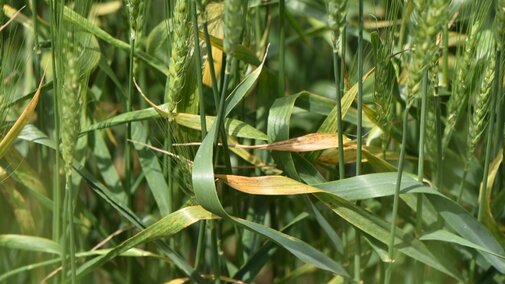Disease levels are low in most Nebraska wheat fields. Current hot daytime temperatures and dry conditions will keep disease levels low in areas that do not receive rainfall. The most conspicuous and widespread disease visible in many fields at low to moderate levels is barley yellow dwarf (Figure 1). In research plots at Havelock Farm (Lancaster County) and the Eastern Nebraska Research and Extension Center (ENREC) near Mead (Saunders County) on June 2, barley yellow dwarf was the predominant disease, but it was present at low levels.
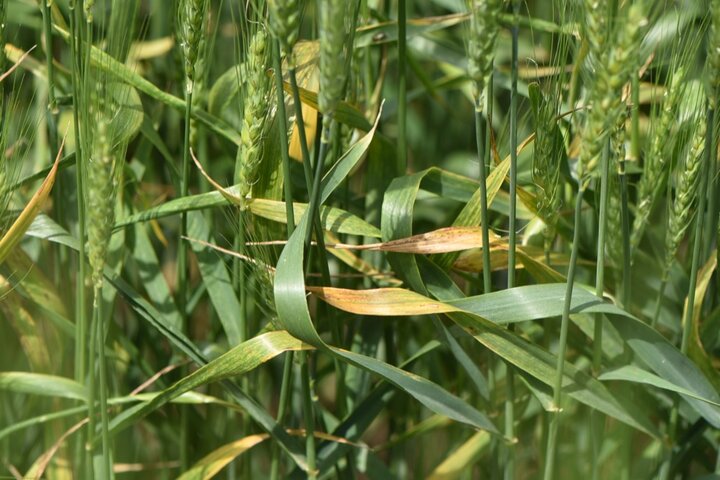
At Havelock Farm, stripe rust (Figure 2) was present at trace levels, but Septoria tricitici blotch (Figure 3) and powdery mildew (Figure 4) were present at moderate to severe levels in some plots. Head diseases and disorders were also observed at Havelock Farm and ENREC at trace levels, notably loose smut (Figure 5) and stem maggot damage (Figure 6). Fusarium head blight has not been reported to date, but growers should watch out for it in areas that received heavy rainfall before and during flowering. Look out for bacterial streak and black chaff as well.
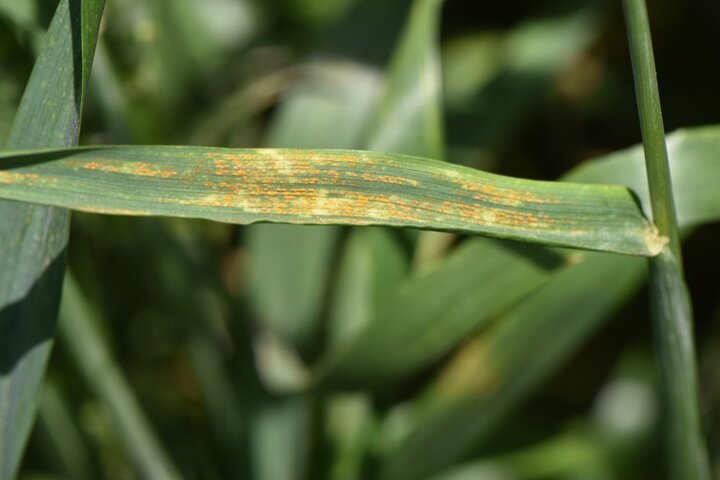
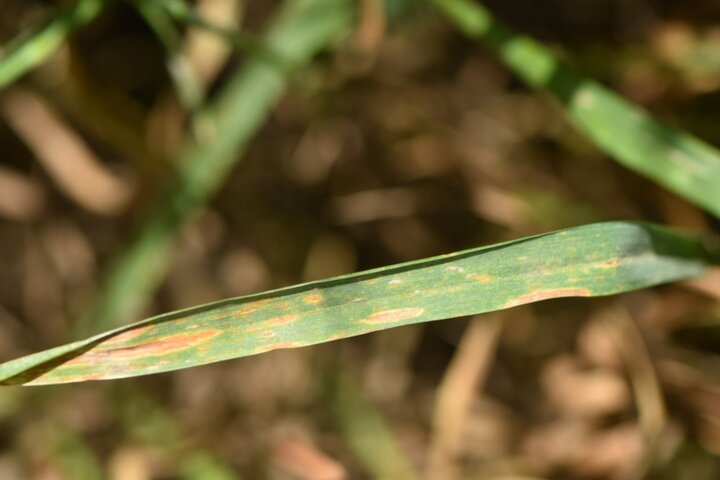
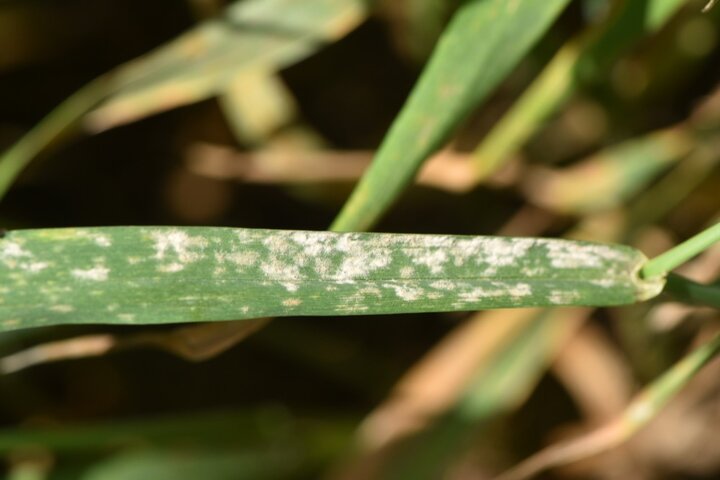
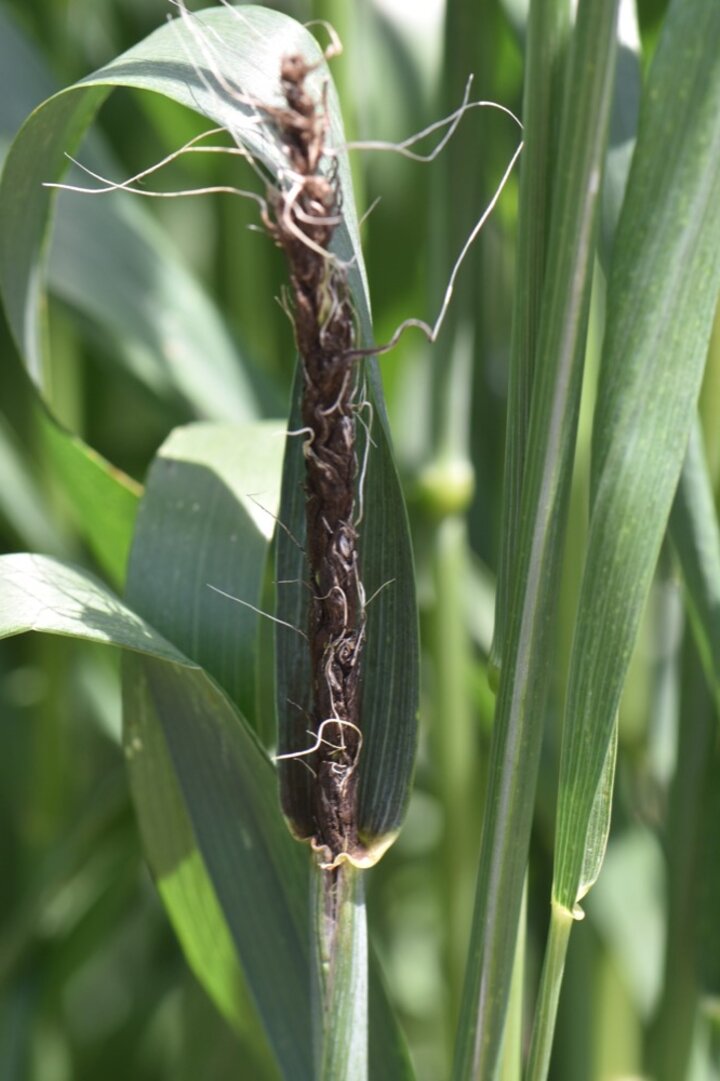
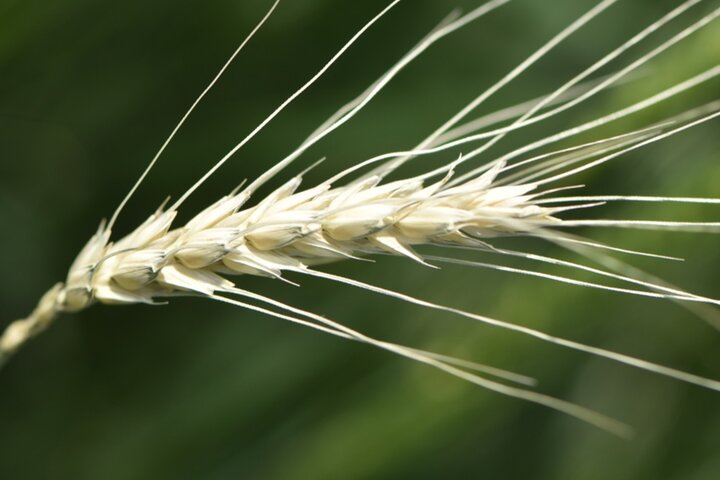
Management
Some wheat fields in the southern part of the state are at the last growth stage or past the growth stage when fungicides can be applied to control foliar fungal diseases and Fusarium head blight. Given the current hot daytime temperatures and dry conditions, development of foliar fungal diseases will be considerably slowed down in areas that remain dry. Barley yellow dwarf, Fusarium head blight, loose smut, and bacterial streak and black chaff cannot be controlled after symptoms appear.
